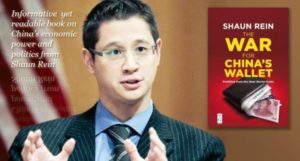
Consultant Gabor Holch looks at the efforts of Urban Revivo to take on international competition by opening. just like Zara, opening a major store in London. Gabor Holch, founder of East-West Leadership, a consultancy, predicted social and environmental issues, political issues, and data could also prove to be hurdles for Urban Revivo, he said, at Market Screener.
Market Screener:
The brand is among a growing cohort of Chinese consumer companies – including coffee chain Luckin and art toy maker Pop Mart – seeking growth abroad as spending weakens at home, where a prolonged property crisis and wage security concerns have dampened consumer sentiment.
Urban Revivo, which operates over 400 stores worldwide selling 130 yuan ($18.17) tops and 350 yuan ($48.93) sundresses, has set a target to open 200 overseas locations within the next five years and has already launched stores in New York and Hong Kong, besides London, this year. It has around 20 stores in Southeast Asia…
The brand launched a European design centre in 2024 to create products tailored to Western consumer tastes and avoid the localisation missteps made by some Western fashion brands in the Chinese market.
Gabor Holch, founder of East-West Leadership, a consultancy, predicted social and environmental issues, political issues and data could also prove to be hurdles for Urban Revivo.
“One of the main secrets of success for Inditex and H&M is a very strongly data-driven business model. When Chinese companies step out of China, they have to start learning about (the overseas data environment) from basically zero,” Holch said.
Gabor Holch is a speaker at the China Speakers Bureau. Do you need him at your meeting or conference? Do get in touch or fill in our speakers’ request form.
Are you looking for more experts on China’s outbound investments? Do check out this list.





















